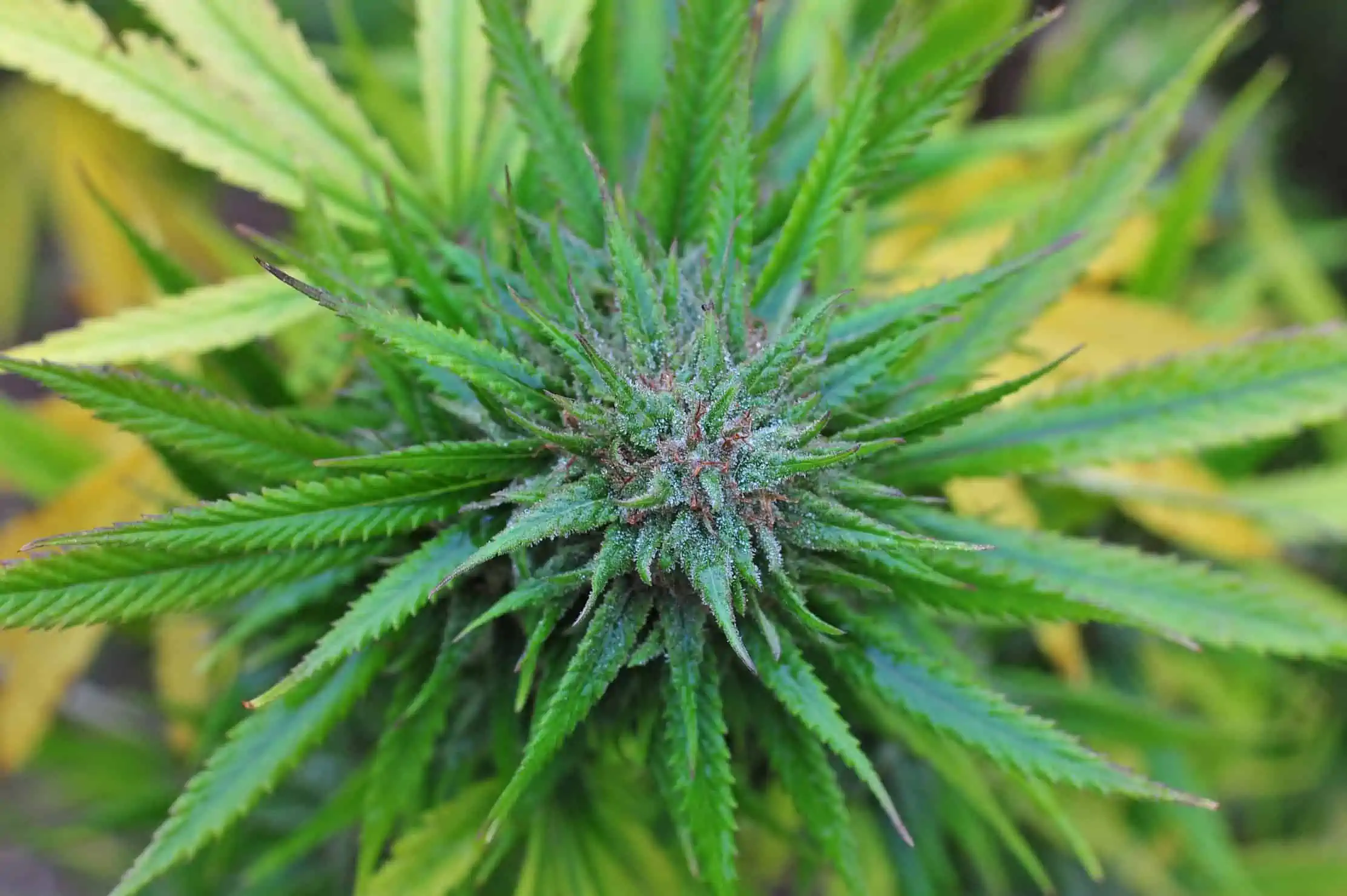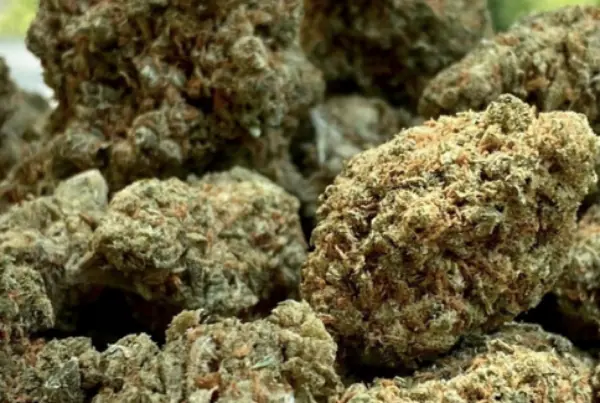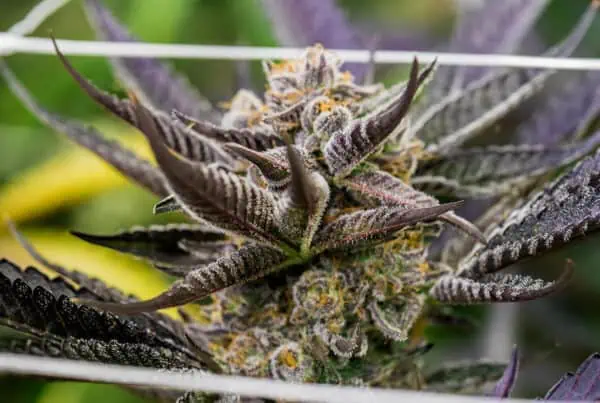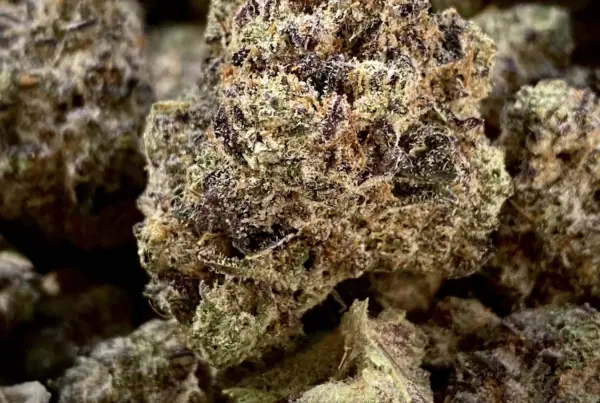TABLE OF CONTENTS
Sativa effects are intriguing to say the least. It is no wonder that powerful sativa strains such as Jack Herer managed to take the cannabis space by storm.
In this article, we discuss some of the most common effects of sativa strains and discuss how we can take advantage of them.
What is Sativa?
Sativa cannabis is native to regions surrounding the equator that are typically hot, such as Thailand, Mexico and Africa. These regions tend to have the perfect climate to grow weed, sativa strains often grow tall, reaching heights up to 20 feet.
Sativa plants have narrow leaves that are delicate and in comparison to Indicas, they have buds that are less dense and generally have an almost fluffy appearance.
Sativa strains generally contain a higher THC to CBD ratio, though this is not a fast rule.
Thanks to their uplifting effects, sativa strains are often used to treat emotional disorders such as depression. Other medicinal uses of sativas are:
- Improving the mood to alleviate depression and anxiety
- Boosting focus and creativity
- Increasing energy to reduce fatigue
- Stimulating the appetite
- Relieving pain
What is a Sativa High Like?
The Sativa high is usually a “head high,” which has an energizing, invigorating effect. The Sativa high can help in the reduction of stress and increasing of mental focus and creativity.
This high is accompanied by an energizing effect that also can reduce anxiety. Using sativa-dominant strains will leave you feeling productive and creative and not too relaxed and lethargic.
The sativa plant will give you an energized high that will increase your productivity and allow you to go through that heap of work you had piled up in record time.
In small doses, sativa will make you feel alert and aware of your environment. It is however important to note that very high doses can have the opposite effect and actually knock you out.
Sativa highs are also considered to be a “social high”.
Sativa, unlike Indica, stimulates the users and makes them feel more energetic and creative. Where one was feeling apathetic and tired, this high will increase their energy like a bolt of lightning.
Sativa strains also have the effect of promoting a feeling of serenity and well-being in the user. These, together with the other effects make it an ideal strain for daytime use and might just be the perfect tonic to deal with stress and apathy.
Best Sativa Strains
There exist a vast array of sativa strains, which differ in both composition and effects. Below is a list of our favorites:
- Mother Gorilla
- Durban Poison
- Sour Diesel
- Tangie
- Super Silver Haze
- Green Crack
- Strawberry Cough
- Jack Herer
- Mango Haze
- Wedding Crasher
How to Tell the Difference Between Sativa and Indica
Sativa and Indica strains of cannabis differ mainly in appearance and effect.
Although both Sativa and Indica strains are subspecies of Cannabis sativa L., they contain distinct differences in the highs they produce.
Sativa strains generally produce highs that are uplifting and energizing while indica strains have more relaxing highs that even have a sedative effect.
The high induced by Indica strains on the other hand is referred to as a “body high” or being “stoned”.
This is because its effects are felt throughout the body rather than just in the head. Indica also enhances the senses such as smell, touch and sound and cause a deep sense of relaxation that can leave on feeling drowsy.
While sativa strains are ideal for daytime use, Indica strains are best used in the evening or at night.
Sativa Effects
1. Elevates Mood
Though this does not happen in every case without fail, ingesting a sativa-dominant cannabis strain usually brings about elevated mood. This is because of the dopamine effects explained earlier as well as other properties that contribute to a better and happier disposition.
Medically, elevation of mood is definitely one reason why you would consume a sativa strain.
2. Increases Energy
Another common positive effect of sativa strains is an increase in energy levels which promote productivity. Not only is sativa known as daytime strain that promotes social interaction, it also tends to spark creativity and reduce the amount of apathy one might be inclined to have.
In other words, the medical effects of sativa differ starkly from those of Indica. Where one (Indica) induces rests and relaxation, the other (sativa) is a pick me up that brings back the energy.
3. Improves Appetite
Another benefit of sativa strains is its ability to improve appetite. Though this is also common in Indica strains, sativas are the preferred choice for these. It is even a common scientific notion that sativa strains can be used for appetite enhancement.
In fact, one scientific publication noted that “…the ability of [C. sativa] to promote eating has been documented for many centuries” sativa strains will ignite your appetite in a big way.
4. Helps with Depression
As we have mentioned earlier, sativa strains are a great “pick-me-up”. Given their ability to increase energy levels, elevate mood, lower apathy and increase happiness, they can be used to manage the symptoms of depression.
5. Promotes Creativity and Focus
As previously discussed, sativa strains spark off the brain and stimulate it to be more creative, have greater focus and more tolerance. This is particular helpful for people who struggle with attention disorder conditions such as ADHD as well as users who just want to experience a bout of creativity and focus.
It is important to note that the same exact sativa strain could have very different effects on different individuals depending on their chemical make-up, age, metabolism and other unique factors.
Sativas strains effects and uses is a popular topic among beginner and experienced cannabis users. Sativa strains, unlike indica strains, are known for their cerebral buzz and uplifting effects that can reduce stress and anxiety while boosting creativity and focus.
Strongest Sativa Strains
If you’re looking for a cannabis strain that will break through your high-tolerance or one that will handle debilitating medical symptoms, then there are plenty of strong sativa marijuana strains for you to enjoy.
Cannabis potency is largely determined by the tetrahydrocannabinol (THC) content in a strain, but its other cannabinoids and terpenes matter, too. Below, you’ll find a shortlist of the strongest sativa strains, but there are plenty more strains to discover with a robust potency.
Ghost Train Haze
Ghost Train Haze offers recreational and medical cannabis consumers a strong dose of THC and a fruity and citrusy aroma. A low dose can induce focus, creativity, and happiness. Medical users appreciate Ghost Train Haze’s ability to tackle severe symptoms such as pain, depression, and appetite loss.
Genetics: Ghost OG x Neville’s Wreck
Breeder: Rare Dankness Seeds
Flowering Time: 10-12 weeks
Yield: Moderate
Destroyer
Destroyer can instantly perk you up during any time of day. Enjoy its delicate fruity and floral aromas while you experience an intense jolt of energy to keep you uplifted and concentrated.
Genetics: Meo Thai x Mexican/Colombian landrace
Breeder: CannaBiogen
Flowering time: 10-12 weeks
Yield: Moderate
Trainwreck
Trainwreck is an intensely cerebral sativa that can take your mind on a whirlwind trip to a euphoric state. Experience a surge of creativity and happiness. Medical users prefer Trainwreck for its relief for migraines, arthritis, pain, and anxiety.
Genetics: Afghani x Thai landrace strains
Breeder: TGA Genetics
Flowering time: 7-9 weeks
Yield: High
Pure Landrice/Sativa Strains
Landrace and pure sativa strains developed around the world in tropical environments. Pure landrace strains continue to be grown around the world thanks to modern technological advancements that help manage humidity, temperature, and lighting levels.
Acapulco Gold
Acapulco Gold comes from Acapulco, Mexico. It has a toffee-like aroma.
Swazi
Swazi Gold is a sativa landrace from Africa. This pure sativa has a sweet and citrusy aroma.
Kilimanjaro
Kilimanjaro is a pure sativa from the mountains of Tanzania. Local tribes referred to this strain as “elephant stomper” and used it for its energizing qualities. Kilimanjaro has a citrusy and fruity aroma.
Durban Poison
Durban Poison is a legendary strain from the South African port city of Durban. It has a sweet smell and energizing effects.
Malawi
Malawi is a pure sativa strain that comes from the Salima region of Malawi in southeast Africa.
“
There are over 300,000 jobs in the cannabis industry. CTU trained me for one of them!

Makes $24.50 @ THC +
Aceh
Aceh, also called Atjeh, is a landrace sativa strain that originated in the Aceh region of Indonesia.
Thai
Thai landrace strains refer to cannabis strains that originated in Thailand and brought into the U.S. starting in the 1970s. Thai landrace strains were bundled as Thai sticks.
Chocolate Thai
Chocolate Thai made became popularized in America during the 1960s. Packaged as Thai sticks made out of flowers tied around a bamboo stick, Chocolate Thai provides a potent and euphoric high and a coffee and chocolate aroma.
Final Thoughts on Sativa Effects
Sativa strains are mostly used for their uplifting, energizing and psychedelic effects. These effects are great for recreational use as well as those seeking to treat conditions such as fatigue and depression.
Though, like with everything else, moderation is key. Sativa strains often contain high amounts of THC, and consuming them in excess could lead to paranoia, anxiety and other unfavorable effects.
It is therefore best to start off with smaller amounts and work your way up to the effect you desire.
Remember to always pace the consumption of your cannabis intake for you to gain its maximum effects and reward.
To learn more about cannabis strains and the effects enroll in CTU's cannabis training program.

Gavin Kushman
Gavin is a worldly adventurer and cannabis connoisseur, embarking on journeys that take him to the far corners of the globe to explore and document the varied effects, flavors, and histories of both renowned and lesser-known strains. From the misty high-altitude farms of the Hindu Kush highlands to the vibrant cannabis cafes of Amsterdam, Gavin's quest for knowledge spans continents. A recognized authority in the cannabis industry, he frequently lends his expertise to leading publications such as Cannabis Training University, where his captivating blog articles chronicle his unique experiences with different cannabis strains.












 Jeff was involved in an accident where he endured a traumatic brain injury. He had a week-long stay in ICU where brain surgeons
Jeff was involved in an accident where he endured a traumatic brain injury. He had a week-long stay in ICU where brain surgeons  100% risk free money back guarantee within 48 hours after purchase if student has not completed any of the courses or exams.
100% risk free money back guarantee within 48 hours after purchase if student has not completed any of the courses or exams.